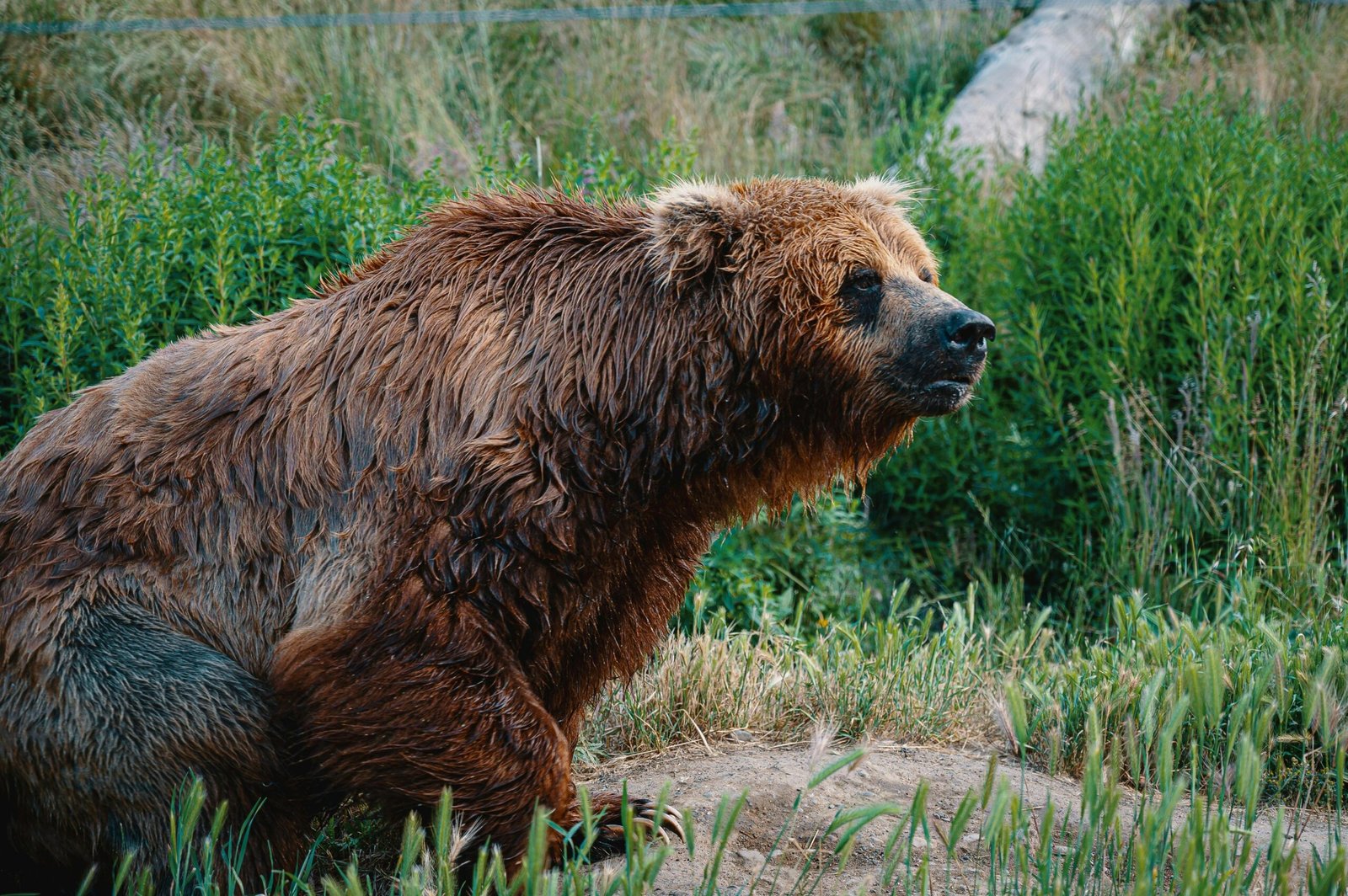Guide to PrevenT Animal Attacks on the Trail
How to manage wild animal encounters while hiking?
The great outdoors offers unparalleled opportunities for adventure, relaxation, and connecting with nature. Hiking through wilderness areas allows us to experience landscapes and wildlife in their natural state, providing memories that last a lifetime. However, sharing these spaces with wild animals comes with inherent risks that every hiker should understand and prepare for prevent animal attacks.
Animal attacks, while rare, can occur when humans and wildlife interact in unexpected or threatening ways. The vast majority of wild animals prefer to avoid human contact, but factors such as protecting young, defending territory, feeling threatened, or being habituated to humans can lead to potentially dangerous encounters.
This comprehensive guide aims to equip hikers with the knowledge and strategies needed to safely share trails with wildlife, prevent dangerous encounters, and respond appropriately if an attack occurs. By understanding animal behavior, preparing adequately, and knowing how to react in critical situations, hikers can significantly reduce risks while enjoying the natural world responsibly.
Understanding Wildlife Behavior
Why Animals Attack
Wild animals rarely attack humans without provocation or reason. Understanding the common triggers for aggressive behavior can help hikers avoid creating threatening situations:
- Protection of young: Many species become particularly defensive during breeding seasons or when offspring are present. Mother bears with cubs, elk with calves, and many bird species will vigorously defend their young if they perceive a threat.
- Defense of territory or resources: Some animals, particularly during mating seasons, may become territorial and view humans as intruders.
- Surprise or fear: When startled at close range, animals may react defensively, perceiving no option for escape.
- Predatory behavior: Though extremely rare with most species, predatory attacks can occur when animals view humans as potential prey.
- Food conditioning: Animals habituated to human food may approach people and become aggressive if they expect food and don’t receive it.
- Rabies or disease: Infected animals may behave erratically and show uncharacteristic aggression.
- Perceived competition: Some animals may view humans as competitors for resources like food or water, especially during scarcity.
Reading Animal Body Language
Different species communicate their intentions and emotional states through specific behaviors. Learning to recognize warning signs can provide crucial time to de-escalate a situation:
Bears
- Defensive posturing: Standing on hind legs (to better see or smell you, not necessarily aggressive)
- Huffing, woofing, or clacking teeth: Stress signals
- Swaying head side to side: Assessing a potential threat
- Ears laid back: Increasing agitation
- Bluff charges: Running toward you but stopping short (a warning)
Mountain Lions
- Crouching: Potential stalking behavior
- Tail twitching: Heightened alertness or agitation
- Ears pinned back: Aggression
- Intense staring: Focused attention as predator
Wolves/Coyotes
- Raised hackles: Alarm or aggression
- Direct stare: Challenge or threat assessment
- Bared teeth or growling: Clear warning signals
- Tail position: Straight out (alert), held high (confident/threatening), tucked (fearful)
Moose/Elk/Deer
- Ears pinned back: Agitation
- Hair standing up on neck/back: Alarm
- Stomping hooves: Warning
- Lowered head (with antlers): Potential charge preparation
Snakes
- Coiling: Defensive preparation
- Rattling (rattlesnakes): Clear warning
- Head raised with neck in S-shape: Strike preparation
- Hissing: Warning
Seasonal Considerations
Animal behavior changes significantly throughout the year, affecting the likelihood and nature of potential encounters:
- Spring: Many animals have young, increasing defensive behaviors. Bears emerge from hibernation hungry and potentially irritable.
- Summer: Peak hiking season coincides with wildlife raising young. Higher temperatures can make some species more aggressive if encountered near limited water sources.
- Fall: Mating seasons for some species like moose and elk can increase territorial behavior. Bears intensify feeding before hibernation.
- Winter: While fewer hikers venture out, animals struggling with food scarcity may be more desperate and less predictable.
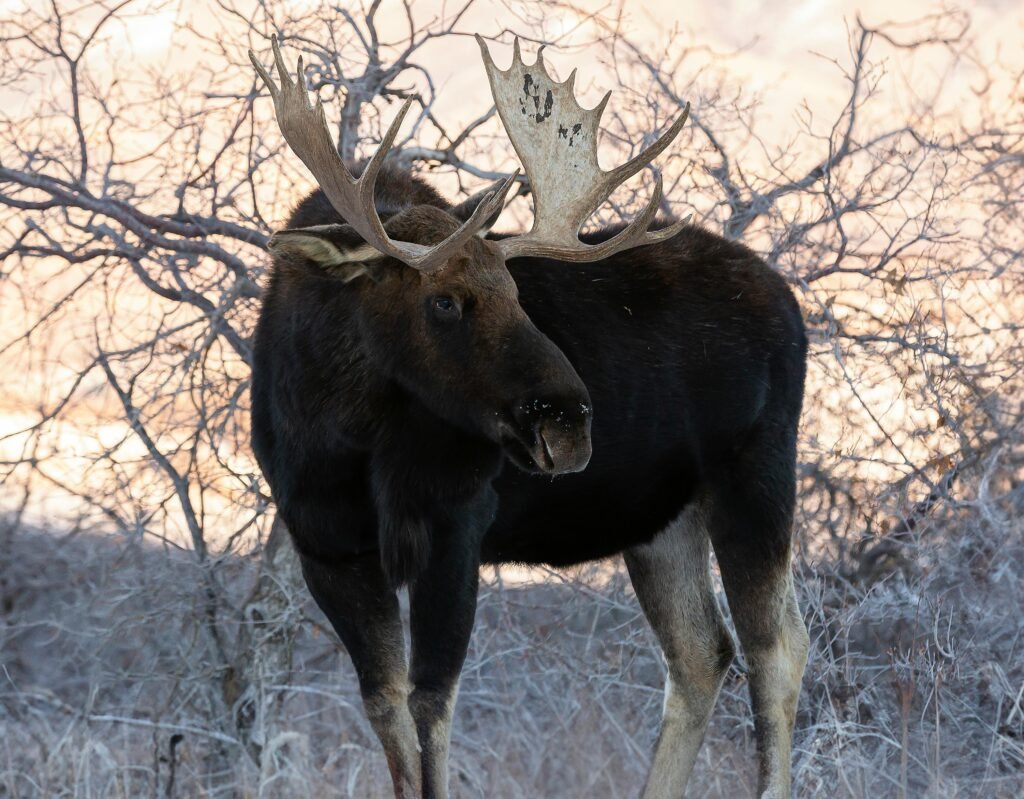
Prevention: Before You Hike
Research and Planning
Thorough preparation is your first line of defense against wildlife encounters:
- Know the local wildlife: Research what species inhabit the area you’ll be hiking, their typical behaviors, and recent activity patterns.
- Check with park rangers: Before setting out, consult with rangers or park staff about recent animal sightings, closures due to wildlife activity, and specific recommendations.
- Review trail reports: Many hiking apps and websites feature recent reports from other hikers that may include wildlife sightings.
- Plan your timing: Avoid hiking during dawn and dusk when many predators are most active. Consider seasonal factors like mating seasons or migrations that might affect animal behavior.
- Choose popular trails for solo hikes: If hiking alone, consider staying on well-traveled paths where animal encounters are less likely and help is more accessible.
- Check weather conditions: Extreme weather can affect animal behavior and movement patterns.
- Understand regional regulations: Some areas require bear canisters, prohibit certain foods, or have specific protocols for wildlife management.
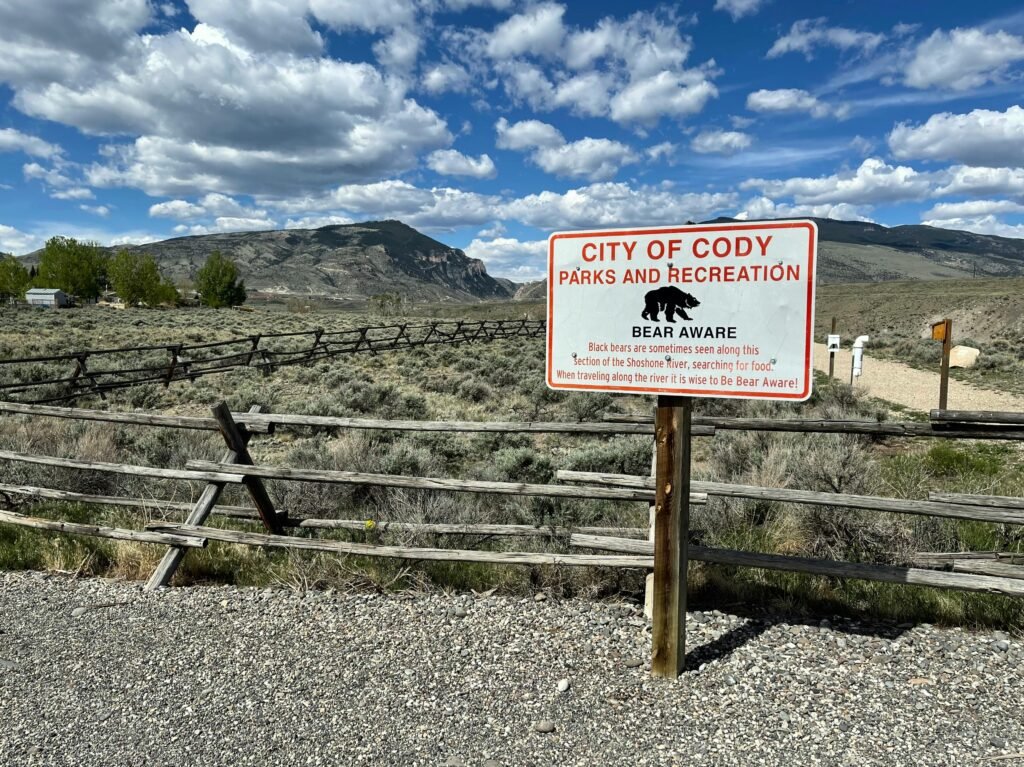
Essential Gear for Wildlife Safety
The right equipment can prevent encounters and provide protection if one occurs:
- Noise-makers:
- Bear bells (opinions on effectiveness vary)
- Whistle (useful for both emergencies and making your presence known)
- Small air horn (more effective than bells for alerting wildlife)
- Deterrents:
- Bear spray (effective against bears and most large predators)
- Walking stick or trekking poles (create space and appear larger)
- Bright flashlight or headlamp (can deter some nocturnal animals)
- Food storage:
- Bear-resistant food canisters
- Odor-proof bags
- Rope for hanging food (where appropriate)
- Communication devices:
- Cell phone (with understanding of coverage limitations)
- Satellite communicator for remote areas
- Personal locator beacon for emergencies
- First aid kit: Include supplies specific to animal encounters (wound cleaning, pressure bandages, etc.)
- Protective clothing:
- Bright colors to improve visibility (avoid white, which can resemble prey animal colors)
- Long pants and sleeves (protection from minor scratches and insects)
- Sturdy boots (protection and stable footing if you need to move quickly)
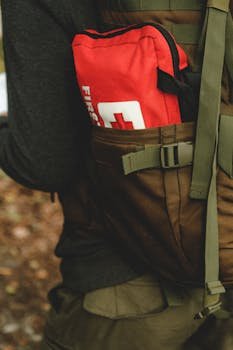
Food Management
Proper food handling is critical for preventing wildlife encounters, especially with bears:
- Before the hike:
- Plan meals to minimize strong odors
- Repackage food in odor-proof containers
- Avoid bringing highly aromatic foods
- During the hike:
- Keep snacks secured when not eating
- Don’t carry food in pockets
- Be mindful of crumbs and wrappers
- At camp:
- Create a triangle configuration: cooking area, food storage, and sleeping area should be at least 100 yards apart
- Use bear-resistant containers or proper hanging techniques
- Never store food, cooking equipment, or scented items in your tent
- Clean all cooking utensils thoroughly away from sleeping areas
- Food disposal:
- Pack out all trash
- Properly dispose of dishwater away from camp
- Don’t bury food scraps (animals will dig them up)
On the Trail: Active Prevention
Hiking Best Practices
The way you move through nature significantly affects your likelihood of problematic wildlife encounters:
- Make your presence known:
- Converse in normal tones
- Sing or make occasional noise, especially in dense vegetation or near running water
- Clap hands when approaching blind corners or dense brush
- Stay alert:
- Watch for fresh tracks, scat, torn-up logs, claw marks on trees
- Listen for animal sounds
- Look for birds suddenly flying away (potential indicator of larger wildlife movement)
- Limit headphone use to hear environmental cues
- Hike in groups when possible:
- Most predators are reluctant to approach groups of three or more
- Stay within sight and sound of companions
- If solo hiking, be extra vigilant and noise-conscious
- Stick to established trails:
- Animals often know and avoid high-traffic human paths
- Better visibility reduces surprise encounters
- Emergency assistance is easier to provide on marked trails
- Respect closures and warnings:
- Areas closed for wildlife activity are serious safety concerns
- Seasonal warnings about increased animal activity should guide your plans
- Proper management of pets:
- Keep dogs leashed in wildlife areas
- Dogs can provoke wildlife and bring angry animals back to owners
- Some trails prohibit dogs entirely during certain seasons
- Be especially careful around water sources:
- Animals concentrate around water, especially in dry conditions
- Make extra noise when approaching streams, lakes, or watering holes
- Consider observing from a distance before approaching
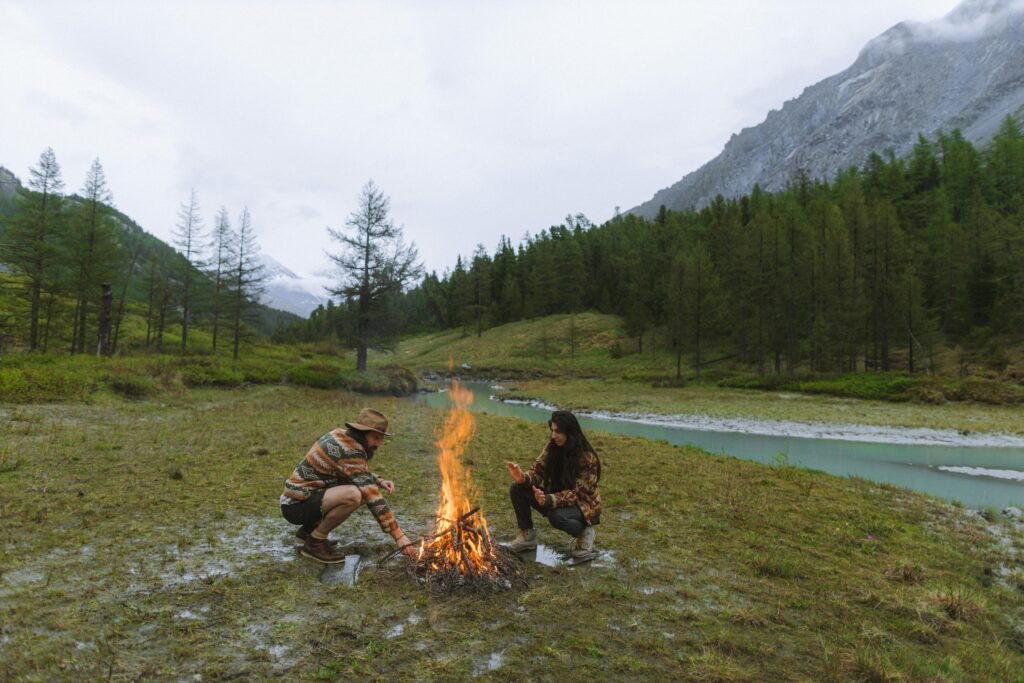
Children and Wildlife Safety
Children require special consideration in wildlife areas:
- Supervision:
- Maintain close visual contact with children at all times
- Establish a buddy system for older children
- Set clear boundaries for exploration
- Education:
- Teach children appropriate noise levels (not too quiet, not screaming)
- Instruct them to report animal sightings immediately without approaching
- Practice what to do in an encounter scenario
- Movement guidelines:
- Prevent running, which can trigger predatory instincts
- Discourage wandering off alone
- Teach children to walk, not run, if rejoining the group
- Emergency response:
- Ensure children know basic response techniques
- Practice freeze/back away skills
- Teach them to recognize adult commands quickly
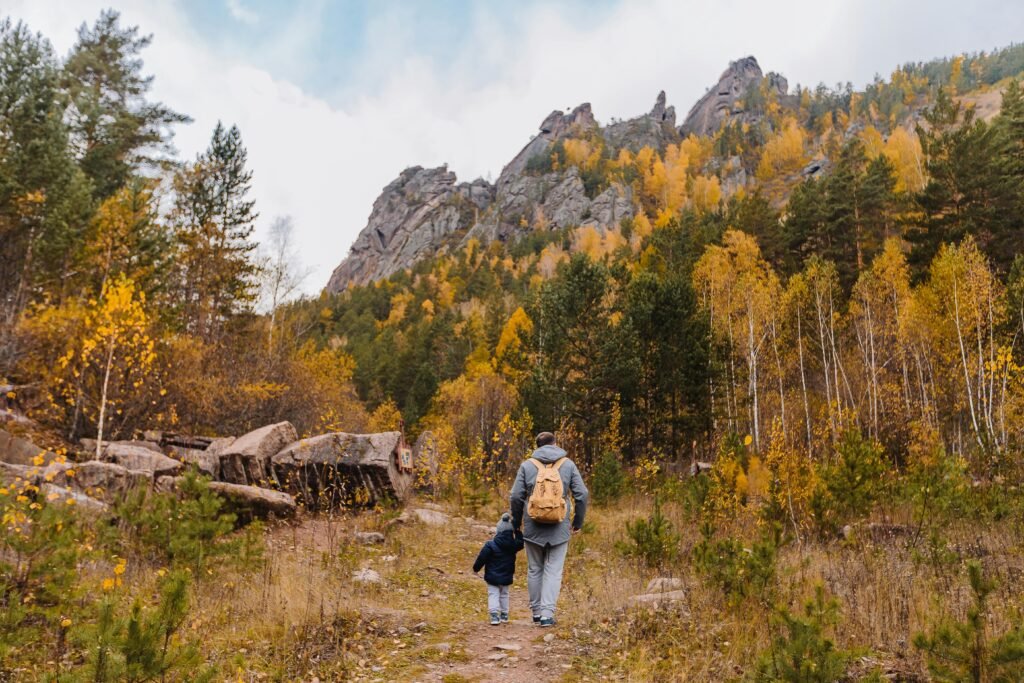
Species-Specific Encounter Management
Bears (Black, Brown/Grizzly, Polar)
Bear encounters require specific responses depending on the species and situation:
General Bear Encounter Guidelines
- Identification:
- Black bears: Smaller, no shoulder hump, straight facial profile, taller ears
- Brown/grizzly bears: Pronounced shoulder hump, dish-shaped face, smaller ears
- Color is not reliable for identification (black bears can be brown, blonde, etc.)
- Initial response:
- Stop and assess the situation
- Speak calmly to identify yourself as human
- Gather group members together
- Prepare bear spray if available
- If the bear hasn’t noticed you:
- Quietly back away
- Give the bear a wide berth
- Change your route if necessary
- If the bear has seen you but is distant:
- Identify yourself as human with calm speech
- Slowly wave arms to help identify as human
- Detour around the bear, giving wide space
- Watch for cubs or carcasses that might trigger defensive behavior
Black Bear Attacks
- Defensive attacks (rare, usually when surprised or protecting cubs):
- Stand your ground initially
- Speak in firm, calm voice
- If contact seems imminent, use bear spray
- If physical contact occurs, fight back aggressively targeting eyes and nose
- Predatory attacks (extremely rare):
- Maintain eye contact
- Act aggressively, shouting and throwing objects
- Fight back with all available means
- Never play dead with a predatory black bear
Brown/Grizzly Bear Attacks
- Defensive attacks (most common):
- Use bear spray if available
- If no spray or spray fails, play dead
- Lie flat on stomach or curl in fetal position with hands clasped behind neck
- Remain still until bear leaves area
- Wait several minutes after bear leaves before moving
- Predatory attacks (extremely rare):
- Fight back with all available means
- Use any weapons available
- Target sensitive areas: eyes, nose, face
Bear Spray Usage
Bear spray is the most effective deterrent when used properly:
- Before the encounter:
- Carry spray in an accessible location (hip or chest holster)
- Remove safety clip when in bear country
- Practice reaching for and deploying spray quickly
- Deployment:
- Use when bear is 30-60 feet away and approaching
- Aim slightly downward toward the bear’s path
- Use short 2-3 second bursts
- Be aware of wind direction to avoid self-contamination
- After deployment:
- Move away perpendicular to the bear’s approach
- Prepare for a potential second spray if needed
- Leave the area after the encounter
Mountain Lions (Cougars)
Mountain lion encounters require specific strategies:
- Prevention:
- Hike in groups
- Keep children close and within sight
- Be especially vigilant at dawn and dusk
- Watch for signs: scrapes in dirt/leaves, partially covered scat, cached prey
- If you encounter a mountain lion:
- Maintain eye contact
- Do not run (triggers predatory response)
- Make yourself appear larger (raise arms, open jacket)
- Speak firmly in a loud voice
- Back away slowly if possible
- If the mountain lion approaches:
- Throw objects without crouching or turning away
- Wave arms and make noise
- Use bear spray if available
- If attacked:
- Fight back aggressively
- Use any available weapons (rocks, sticks, hiking poles)
- Target sensitive areas: eyes, nose, face
- Protect your neck and head
- After the encounter:
- Report to authorities immediately
- Seek medical attention for any wounds, even minor ones
Wolves and Coyotes
While wolf attacks on humans are extremely rare, coyote encounters are becoming more common in some regions:
- Prevention:
- Make noise while hiking
- Keep pets leashed
- Properly store food
- If you encounter wolves or coyotes:
- Stand tall and assertive
- Make yourself look larger
- Maintain eye contact
- Back away slowly
- Do not run or play dead
- If approached:
- Shout, clap hands, throw objects toward (not at) the animal
- Use bear spray if available and if the animal continues approaching
- Fight back if attacked
- Understanding wolf pack behavior:
- Wolves may display curiosity without aggression
- A lone wolf might be more unpredictable than a pack
- Wolves may “escort” you out of their territory by following at a distance
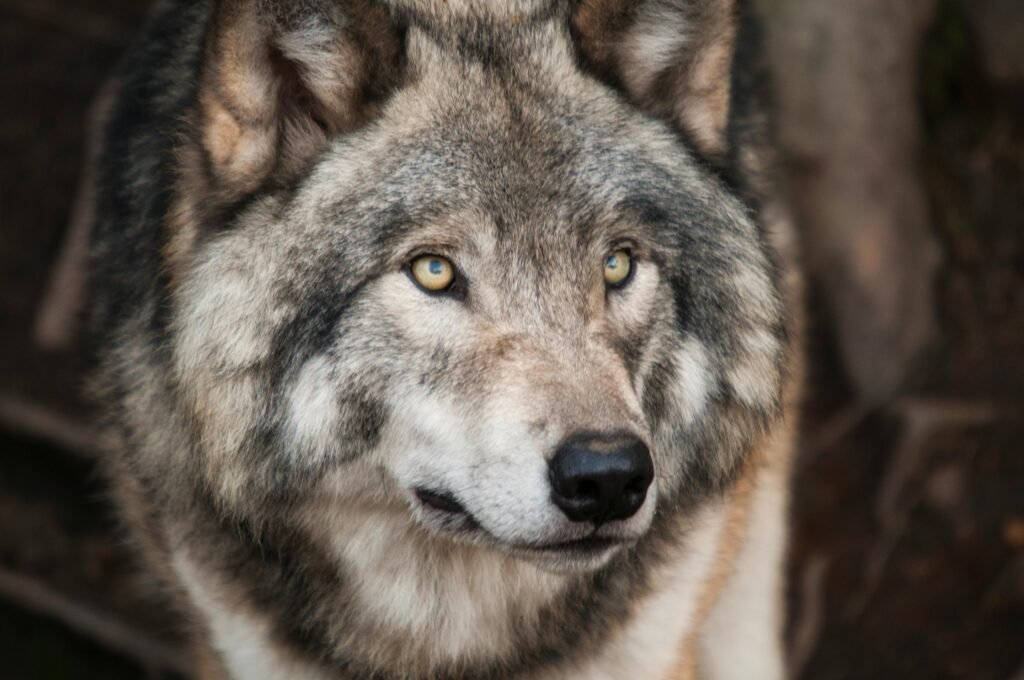
Moose, Elk, and Deer
Large herbivores cause more injuries to humans than predators in many wilderness areas:
- Warning signs of aggression:
- Laid-back ears
- Raised hackles
- Stomping hooves
- Lowered head
- Charging (often a bluff, but not always)
- Prevention:
- Give wide berth, especially to females with young
- Never approach or feed
- Be especially cautious during rutting (mating) season
- Watch for “earless” appearance (ears laid flat back against head)
- If you encounter an aggressive ungulate:
- Create barriers between yourself and the animal (trees, rocks, vehicles)
- Back away slowly when possible
- If charged, run and seek solid shelter
- Unlike with predators, running from charging herbivores is recommended
- If knocked down:
- Protect head and vital organs
- Try to crawl to shelter
- Stay in fetal position if escape is impossible
Snakes
Venomous snake encounters require specific precautions:
- Prevention:
- Stay on clear trails
- Watch where you step and place hands
- Use hiking poles to probe areas ahead
- Wear closed shoes and long pants in snake habitat
- Step on logs, not over them
- If you encounter a snake:
- Freeze initially to assess the situation
- Give the snake escape space
- Back away slowly
- Remember that most snakebites occur when people try to kill, capture, or harass snakes
- If bitten:
- Move away from the snake
- Keep the bitten area below heart level if possible
- Remove jewelry or constrictive items from affected limb
- Keep victim calm and immobile
- Seek medical attention immediately
- Do NOT: cut the wound, attempt suction, apply tourniquet, apply ice, or give alcohol
- Identifying venomous snakes (North America):
- Rattlesnakes: Triangular head, rattle (sometimes missing), heat-sensing pits
- Copperheads: Hourglass-shaped darker bands, copper-colored head
- Cottonmouths/Water Moccasins: Thick body, white mouth interior when threatened
- Coral Snakes: Red, yellow and black bands (“red touch yellow, kill a fellow”)
Wild Boars and Feral Hogs
Increasingly common in many regions, these animals can be dangerous when threatened:
- Prevention:
- Make noise while hiking
- Watch for signs: rooted-up soil, tree rubs, tracks
- Be especially cautious around piglets
- If you encounter wild hogs:
- Remain calm and move away slowly
- Climb a tree or boulder if charged
- Put solid objects between yourself and the animal
- If attacked:
- Fight back targeting the face, especially the eyes
- Use any available weapons
- Get to higher ground if possible
Emergency Response to Attacks
Despite best prevention efforts, attacks can still occur. Knowing how to respond can save lives:
First Aid Basics
- Bleeding control:
- Apply direct pressure with clean cloth
- Elevate wounded area if possible
- Use pressure points if bleeding continues
- Apply tourniquet only as last resort for life-threatening bleeding
- Wound management:
- Clean with potable water if available
- Cover with clean bandage
- Monitor for signs of infection
- All animal bites should be evaluated by medical professionals due to infection risk
- Shock prevention:
- Keep victim lying down if possible
- Maintain body temperature (warm covering)
- Elevate feet if no head/neck/back injuries
- Reassure and keep calm
- Broken bones/severe injuries:
- Immobilize injured area
- Do not attempt to realign bones
- Pad around injury for protection
- Improvise splints if necessary
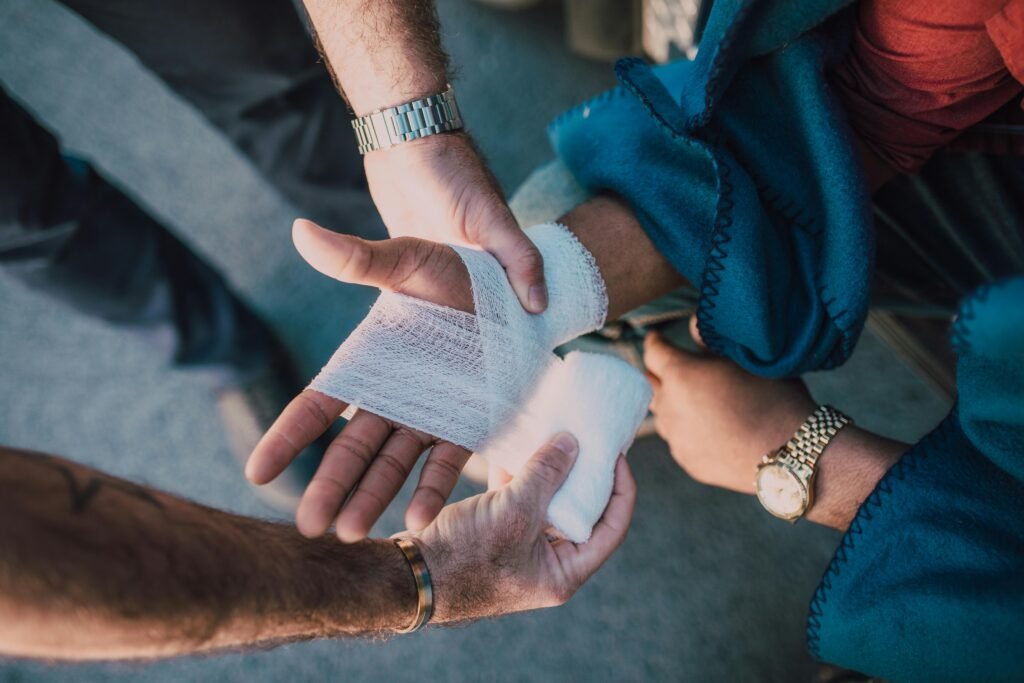
Evacuation Decisions
Knowing when and how to evacuate is crucial:
- When to evacuate immediately:
- Significant bleeding that doesn’t stop with pressure
- Broken bones, especially if open fracture
- Any animal bite (due to infection risk)
- Signs of shock or severe trauma
- Head, neck, or spinal injuries
- Self-evacuation vs. waiting for rescue:
- Consider: severity of injuries, distance to trailhead, communication options, weather, time of day
- Self-evacuation may be necessary if communication devices are unavailable and injuries allow movement
- If waiting for rescue, focus on first aid, sheltering, and signaling
- Signaling for help:
- Cell phone (if service available)
- Satellite communicator
- Whistle (three short blasts is universal distress signal)
- Visual signals (bright clothing, reflective materials)
- Signal fire (only if safe and legal)
Working with First Responders
Understanding how to interact with rescue personnel:
- Providing critical information:
- Species involved in attack
- Time of attack
- First aid measures already taken
- Victim’s medical history if known
- Location details (coordinates if available)
- Landing zone preparation (for helicopter evacuation):
- Clear area at least 100 ft x 100 ft if possible
- Remove loose objects that could blow
- Mark landing zone with bright items
- Assign someone to guide helicopter from safe distance
- Documentation for later reporting:
- Photos of injuries (for medical purposes)
- Description of animal
- Location details
- Behavior before, during, after attack
Special Considerations TO PREVENT WILDLIFE ATTACKS
Night Hiking and Camping
Darkness creates additional challenges for wildlife safety:
- Camping safety:
- Establish proper food storage before dark
- Use established campsites where possible
- Set up tents away from game trails and water sources
- Create visibility around tent area
- Consider camping areas with natural barriers
- Nighttime movement precautions:
- Use headlamp or flashlight consistently
- Make regular noise
- Travel in groups
- Be especially vigilant around water sources
- Carry accessible deterrents
- Dealing with curious nocturnal visitors:
- Identify animal if possible (eye shine, sounds)
- Make noise from inside tent
- Have deterrents ready
- Never investigate strange sounds alone
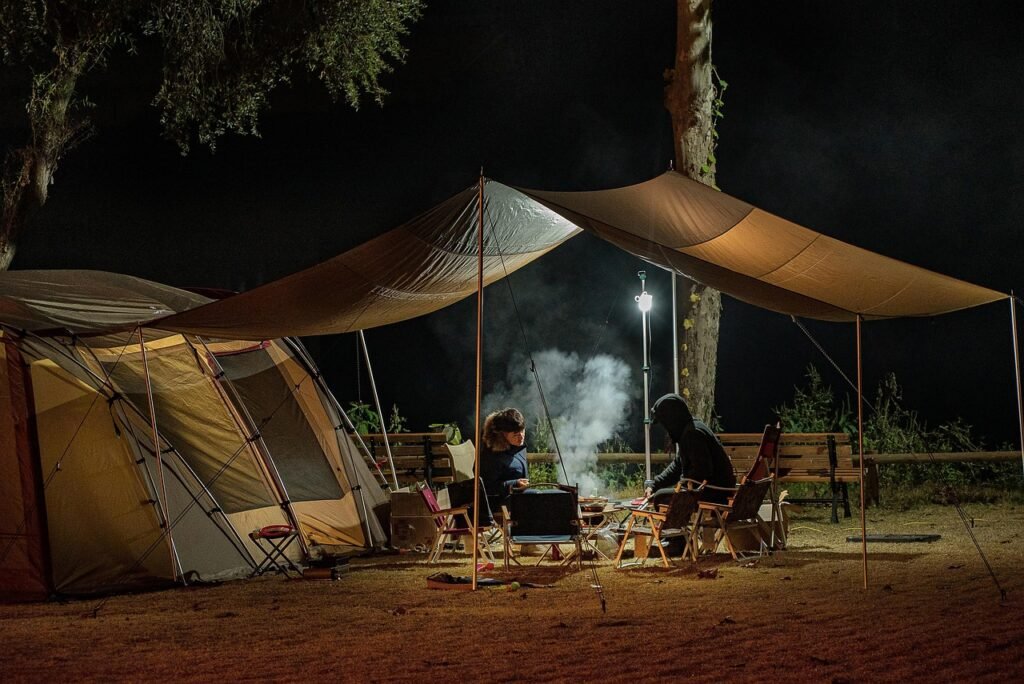
Wildlife Photography Ethics and Safety
The pursuit of wildlife photos can lead to risky behavior:
- Safe photography practices:
- Use telephoto lenses to maintain distance
- Never approach animals for better shots
- Be aware of your surroundings, not just the viewfinder
- Know signs of stress or aggression in subject animals
- Ethical considerations:
- Never feed animals for photos
- Avoid disturbing natural behaviors
- Respect closures and wildlife management areas
- Don’t share specific locations of sensitive species
- Photography equipment safety:
- Keep gear secured to avoid dropping/noise
- Have deterrents accessible, not packed away
- Consider tripods/monopods as potential defensive tools
International Hiking Considerations
Wildlife threats vary dramatically worldwide:
- Africa:
- Hippos and elephants cause numerous fatalities annually
- Never position yourself between animal and water/young/escape route
- Larger minimum safe distances required for most species
- Professional guides often mandatory in wildlife-rich areas
- Australia:
- Venomous snakes abundant
- Saltwater crocodiles in northern regions
- Pressure immobilization technique recommended for some venomous bites
- Different first aid protocols than North America
- South America:
- Jaguar encounters (back away, never run)
- Caiman and anacondas near waterways
- Highly venomous snakes with different identification features
- Vampire bats in some regions (rabies vector)
- Asia:
- Tigers, leopards in certain regions
- Sloth bears particularly aggressive if surprised
- King cobras and kraits among dangerous snakes
- Komodo dragons in Indonesia require special precautions

Be sure to study each destination to prevent wild animal attacks
Hiking with Disabilities
Wildlife safety requires adaptation for hikers with disabilities:
- Mobility considerations:
- Plan routes with solid evacuation options
- Consider physical ability to deploy deterrents
- Adapt standard responses (playing dead, climbing trees may not be options)
- Traveling with companions highly recommended
- Visual impairments:
- Rely more on auditory cues to detect wildlife
- Consider devices that enhance hearing awareness
- Hiking companions should provide detailed wildlife descriptions
- Develop tactile signals for urgent communications
- Hearing impairments:
- Rely more on visual scanning of environment
- Consider vibrating alert devices that companions can trigger
- Use hiking poles to feel ground vibrations
- Visual checks should be more frequent and thorough
After a WILDLIFE Encounter
Reporting Protocols
Proper reporting helps wildlife management and public safety:
- Who to contact:
- Park rangers or land management agency
- Local wildlife authorities
- Emergency services if injuries occurred
- Public health department for potential rabies exposure
- What information to provide:
- Species and estimated numbers
- Precise location with coordinates if possible
- Time and date
- Animal behavior description
- Any human behaviors that may have influenced the encounter
- Photos if safely obtained
- Follow-up responsibilities:
- Return for interviews if requested
- Complete official reports
- Provide medical documentation if relevant

Psychological Impacts
Animal attacks can have lasting emotional effects:
- Normal responses:
- Heightened anxiety in similar environments
- Flashbacks or intrusive thoughts
- Sleep disturbances
- Hypervigilance
- Healthy coping strategies:
- Process the experience through discussion
- Gradually return to outdoor activities
- Focus on preparation and knowledge
- Connect with others who have had similar experiences
- When to seek professional help:
- Persistent nightmares or flashbacks
- Avoiding outdoor activities previously enjoyed
- Panic attacks when contemplating hiking
- Symptoms interfering with daily functioning
- Finding meaning and perspective:
- Educational opportunities from experience
- Improved safety practices
- Contributing to wildlife conservation understanding
- Mentoring others in wilderness safety

Education and Resources
Wildlife Safety Programs
Further education enhances safety and enjoyment:
- Formal training options:
- Bear awareness courses
- Wilderness first aid certification
- Tracking and sign reading workshops
- Park ranger-led programs
- Online resources:
- National Park Service wildlife safety pages
- State wildlife agency materials
- Wilderness medicine organizations
- Hiking club safety resources
- Community learning:
- Local naturalist groups
- Guided interpretive hikes
- Outdoor retailer workshops
- University extension programs
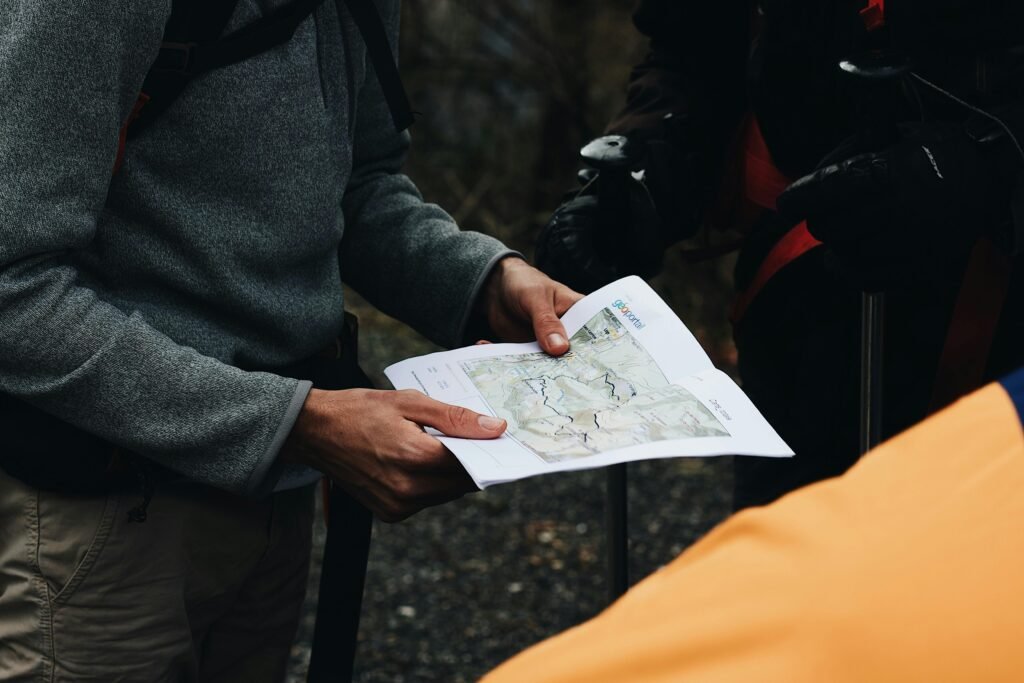
Digital Tools for Wildlife Safety
Technology can enhance wildlife safety:
- Smartphone apps:
- Wildlife identification
- Track and sign recognition
- First aid guidance
- GPS location sharing
- Online reporting systems:
- Recent wildlife sighting databases
- Trail condition reports
- Incident mapping tools
- Closure information
- Emergency technology:
- Personal locator beacons
- Satellite messengers
- Emergency response apps
- Wildlife alert networks
Conclusion
The wilderness offers incomparable experiences that connect us to the natural world in profound ways. While animal attacks are statistically rare events, they represent a legitimate concern for anyone venturing into wild places. The good news is that with proper knowledge, preparation, and response techniques, hikers can dramatically reduce both the likelihood and consequences of dangerous wildlife encounters.
The most effective approach to wildlife safety combines respect, awareness, and preparedness. By understanding animal behavior, recognizing warning signs, and responding appropriately to different situations, hikers can share trails with wildlife while minimizing risks to both themselves and the animals.
Remember that wildlife encounters, even challenging ones, are privileges that come with responsibility. Each time we enter natural areas, we are visitors in the homes of countless species that have evolved to survive in these environments long before humans arrived. Our role as responsible visitors includes learning how to minimize our impact and avoid creating dangerous situations.
By applying the principles and techniques outlined in this guide, you can approach your hiking adventures with confidence, knowing that you have the knowledge to prevent most problematic encounters and respond effectively if prevention fails. This preparation allows you to focus on the joy, wonder, and restoration that wilderness experiences offer.
Stay alert, stay informed, and stay safe as you explore the magnificent wild places our world has to offer.
Additional Resources
Recommended Reading
- “Bear Attacks: Their Causes and Avoidance” by Stephen Herrero
- “Cougar: The American Lion” by Kevin Hansen
- “Behaving as if the God in All Life Mattered” by Sylvia Scott Waterhouse
- “Reading Wildlife Signs” by Len McDougall
- “Wilderness First Aid: Emergency Care for Remote Locations” by AAOS
Online Resources
- National Park Service Wildlife Safety Pages
- International Association for Bear Research and Management
- American Hiking Society
- Leave No Trace Center for Outdoor Ethics
- WildAware.org
Emergency Contacts
- In immediate danger: 911 (where available)
- US/Canada: Park Rangers via park dispatch
- Wildlife conflict reporting: State/provincial wildlife agencies
- Injured wildlife: Local wildlife rehabilitation centers

